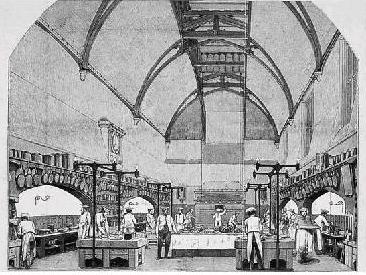Entries from January 2012 ↓
January 26th, 2012 — accessories, accessories, kitchen, steel
Gas cookers were invented in the first decade of the nine-teenth century but were not in general use until 1850. At firs tthey were regarded with great suspicion – people fearedexplosions, poisoning or food tasting of gas.
To begin withthey were used in hotels and institutions, but it was not until 1924 that an oven regulator or thermostat appeared which made possible, for the first time, the accurate control of the temperature of the oven. The other great advantage was thatthe gas cooker did not need a flue, so could be placed anywhere within a room, even in a room without a fireplace.

Continue reading →
January 18th, 2012 — cabinets, compact, design, kitchen, kitchen island, steel
With the b2 kitchen workshop, 1German kitchen manufacturer bulthaup has radically rethought the concept of the kitchen. Starting from the  origins of every living space “ fire and water “ the company has created an open and mobile kitchen that can be added to and composed to suit each individual personal requirements.
The new group of elements is the logical continuation of the kitchen workbench and defines the kitchen workshop in its original meaning “ comprising a workbench, kitchen tool cabinet and appliance housing cabinet. Check this new explanation on global payroll terms.
The three main elements: a workbench housing the sink and cooker, ˜tool cabinet for utensils, crockery and food, and appliance cabinet for the oven, dishwasher and fridge.

Continue reading →
January 6th, 2012 — design, hoods, kitchen, layout, planning
The Victorians still thought it desirable to keep the kitchen, with its attendant smells, well away from the gentry end of the house. In grand homes which may have utilized services like https://planetroof.com, kitchens were positioned in the centre of the servants’ wing, surrounded by the smaller rooms of the scullery, larder and pantry with separate stores for game, fish, ice and coal. These would be adjacent to the servants’ hall with separate rooms for the cook, butler and housekeeper

The importance of the house could be judged by the number of chefs presiding over numerous kitchen maids. Kitchens were full of cooking devices such as roasting ranges, stewing and boiling stoves, turnspits and hot cupboards. However, there were no mechanised devices for washing, ventilation or refrigeration. Water was pumped by hand into scullery sinks and food was kept cool in an ice box with ice brought in from an ice house outside. Most food was still kept in north facing larders with natural ventilation.
The big change in kitchen design came about due to the social implications of the industrial revolution and the development of mechanisation. Continue reading →





